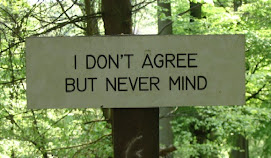There seems to be a variety of sport about at the moment in the news: Henley Regatta, Wimbledon tennis, golf, and the Olympics are never far from the news either.
All of these require the participants to be a the peak of their potential - but able to perform without distraction from the inevitable pressures of crowds and media attention.
You might not think that sort of 'big match' pressure would ever apply to you while out riding, but it can.
I had a Born Again trainee who could do one thing at once, not two. She could perform good clutch control and ride well in a straight line. When parked, she could turn her head to look through a turn.
But not together.
So I asked whether she liked music, and what type?
“Well,” answered this mother of two teenage boys “Heavy rock, actually!”
So I got her to sing ‘Born to be wild’ as I pushed her around a loop (big enough that we’d just got to the chorus at the end of the first verse as I collapsed). Quite happily, she was looking through the turn.
The way I use this is that the left, logical, side of the brain is the side that nags: “Oooh, last time you were in front of a crowd you tensed up. Whatever you do, don’t think about TENSING UP!”. So the right side of the brain, that just wants to get on and do it, gets over-ruled.
Solution? Give the left side something to do, it’ll be happy when it’s busy and won’t make mischief.
Singing is good as it takes a lot of concentration. Another – particularly good for riders who’ve had cornering problems (that’s a euphemism for ‘crash’) can tell the L side to talk them through what they should be doing rather than picking fault: “Slow now, press now, look now, roll now”, etc.
People talk about ‘the power of positive thought’ without actually understanding what it can achieve or its limits – try using the ‘tell me’ method to juggle and you won’t be able to think fast enough! Also, if you’re going to talk yourself through an action you need to know what ‘perfect’ looks like.
Then use self-awareness to measure how you need to ‘close the gap’, set small targets for achievement that you can complete. This is where an instructor can help, both with target setting (deciding exercises etc.) and encouragement.
Visualisation is excellent, too.
Long version:
http://www.dropzone.com/safety/articles/Visualizing.shtml
Shorter:
http://www.skydive-info.com/skydiving/showthread.php?t=235
http://www.skydive-info.com/skydiving/showthread.php?p=1711
.
Wednesday, 20 July 2011
Subscribe to:
Post Comments (Atom)





No comments:
Post a Comment